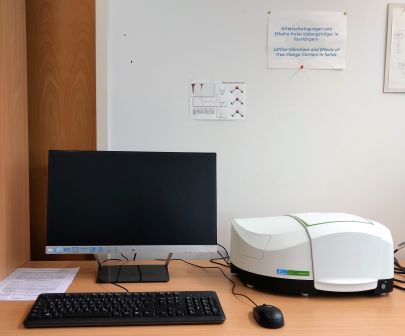Lattice Vibrations and Effects of Free Charge Carriers in Solids
Supervisor: Dr. Chris Sturm
The spectral dependence of the dielectric function of solids in the infrared is mainly determined by lattice vibrations and free charge carriers. The doping with other atoms has influence on both physical phenomena. The reflectivity and the transmission coefficient of doped and undoped AIII-BV semiconductors are measured with a modern infrared spectrometer in the wave number range from 4000 to 200 cm -1.The optical constants have to be calculated from the recorded data with help of Fresnels formulas. If the transmission is not measurable than the dielectric function is determined by a fitting procedure with help of Drudes oscillator model (just the reflectivity data is used for that). The results are then used to calculate the parameters of the lattice vibrations like the frequency of vibration, the damping constant, and the oscillator strength, and the parameters of the free charge carriers like the concentration, plasma frequency, and the mobility.
- Dielectric function of solids in the infrared
- Lattice dynamics and charge carrier effects
- Fresnels formulas
- Infrared spectroscopy, reflection and transmission measurements
- Spectral resolving power and the behaviour of stray light

